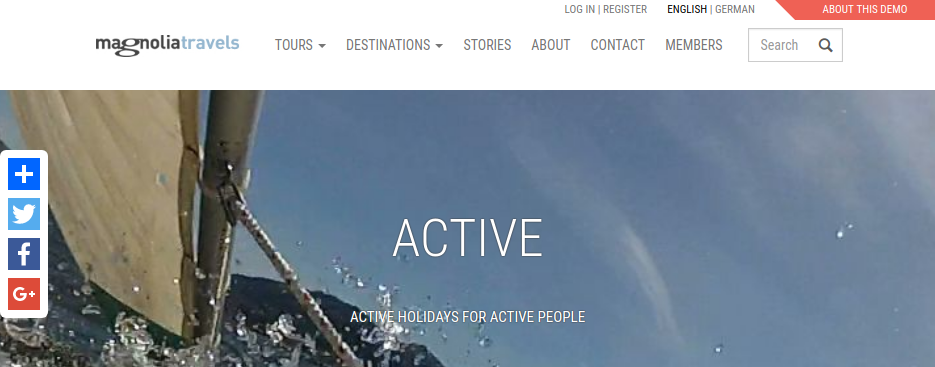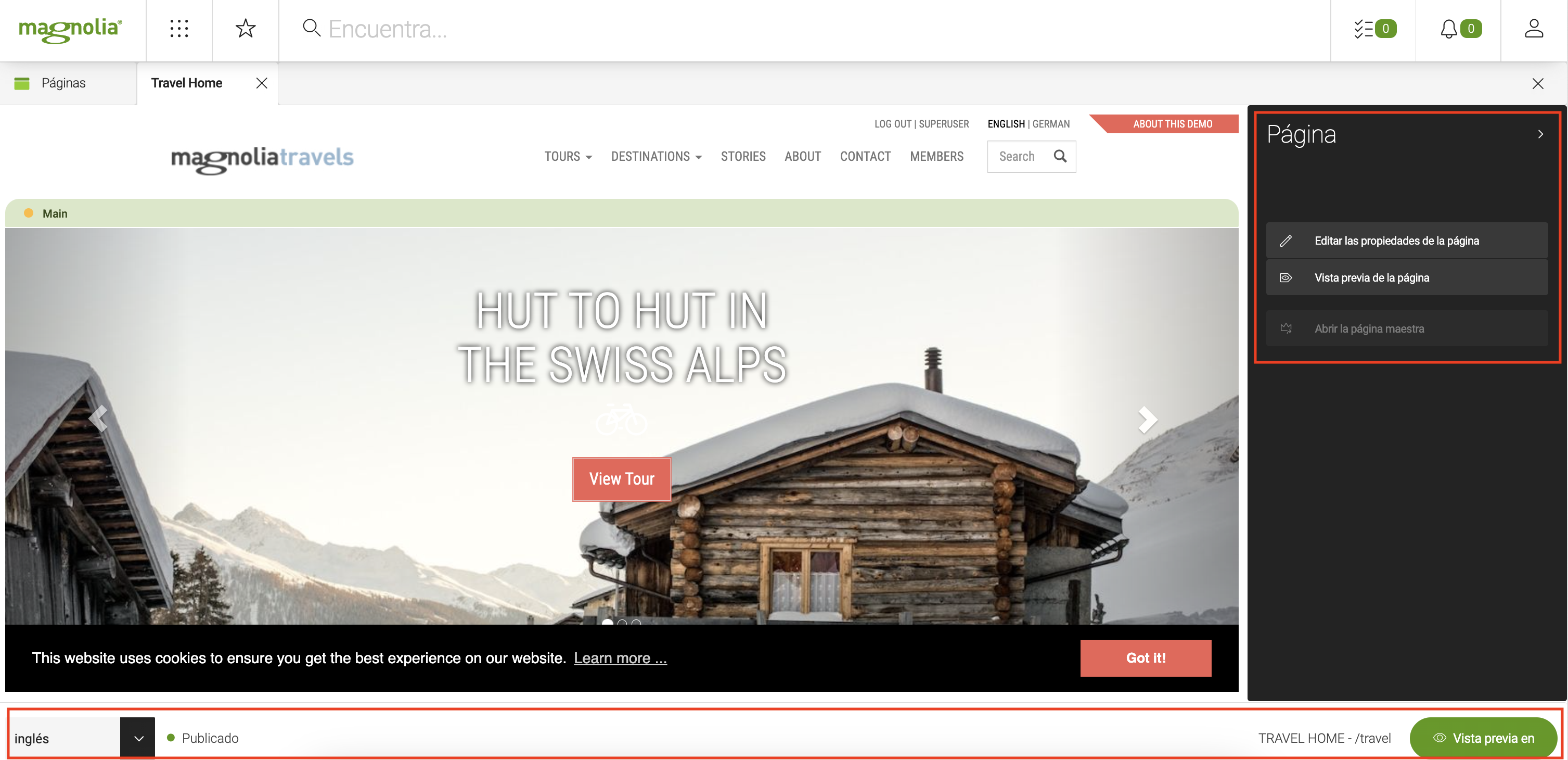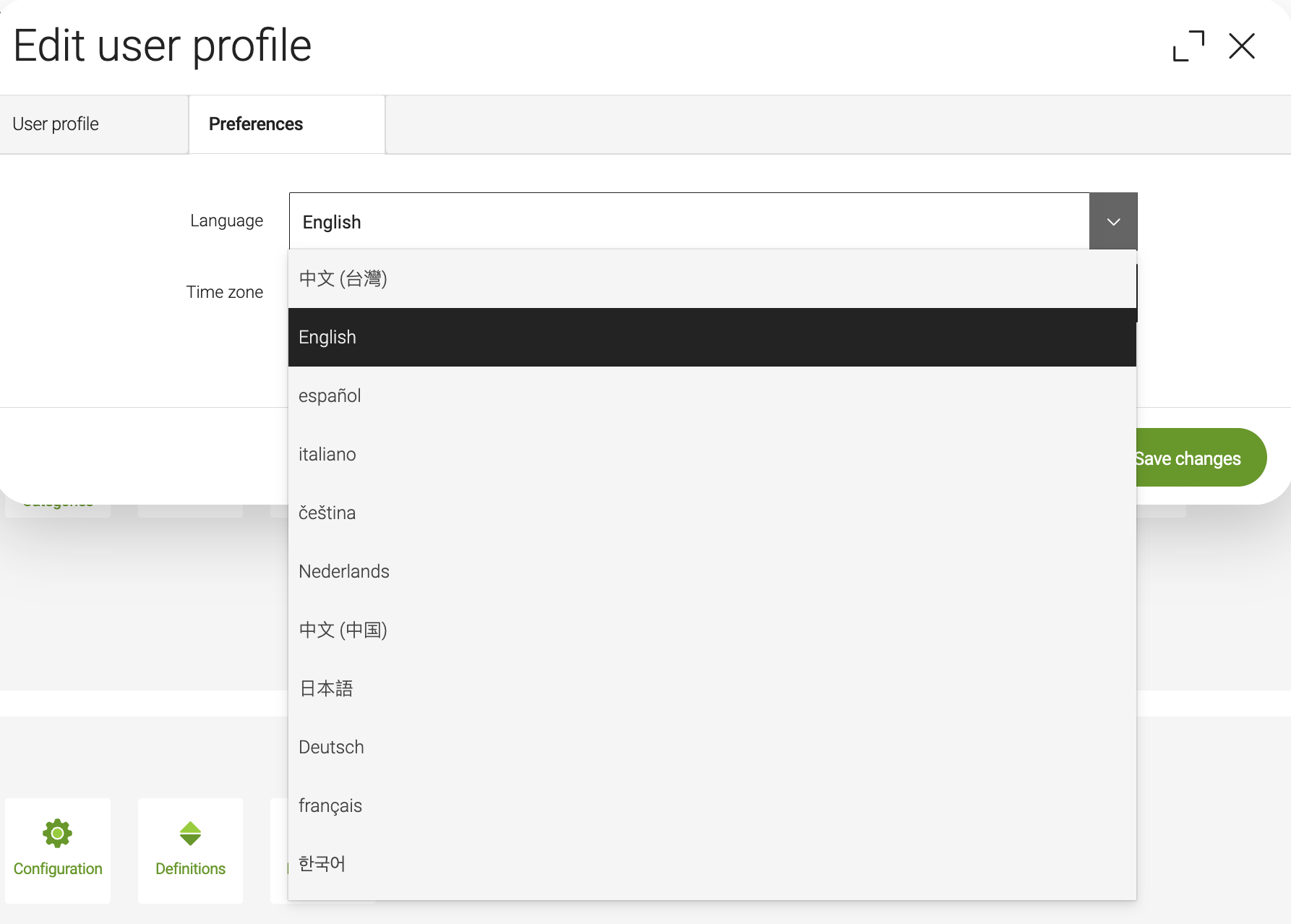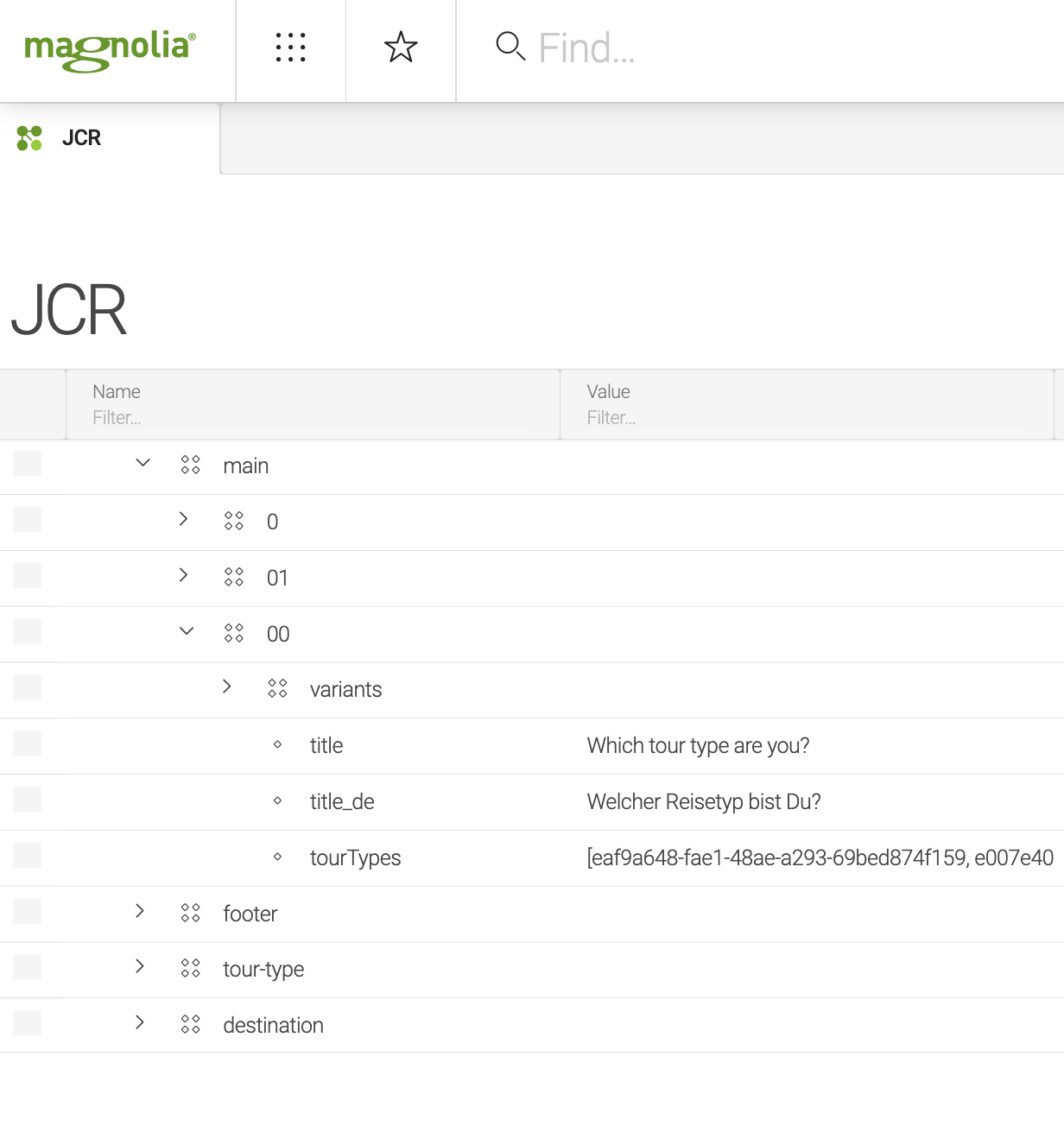AdminCentral and public locales
This page describes two different types of language locale in Magnolia and how to configure Magnolia for them. The two locales influence the rendering of content in the AdminCentral and on a published page.
What is locale
Generally speaking, a locale in computing is ``a set of parameters that defines the user’s language, region and any special variant preferences that the user wants to see in their user interface'' (Wikipedia).
Locale is more often associated with the language parameter, which is usually defined by a two-, three- or four-letter language code, standardized under ISO 639. See the IANA Language Subtag Registry for a complete list of available language codes and language variants.
Two locales in Magnolia
The question of two locales is connected with the types of
users who access a Magnolia
instance.
An ordinary internet user, new or returning, or even an application consuming content as JSON or XML via REST API – all of whom we shall call visitor for simplicity – will usually only be able to see and interact with content of a published web project or website. The visitor will be interacting with a running public instance of Magnolia and will expect that the content of each page on the site will be available in a language he can understand or defines in his request, ideally in his native language. A visitor whose native language is English will prefer content in English (the screenshots are from the Travel Demo):

On the other hand, an editor, publisher or even a sysadmin – let’s refer to them with the term AdminCentral user – working with the author instance of Magnolia may have different locale preferences than the visitor. An AdminCentral user’s native and hence preferred language may be, for example, Spanish but the content being edited may still be in English. The AdminCentral user would probably welcome if the following items in the author instance (see also Types of translatable text) are displayed in Spanish rather than in English:
-
Field labels and descriptions,
-
Messages (alerts, warnings, information),
-
App UI elements such as workbenches, columns, forms and actions, and
-
Buttons in the page editor in edit mode (used to open dialogs)

Magnolia has been built to deal with these two separate locale preferences:
-
Public Locale
-
AdminCentral Locale.
Determining and setting the latter is fairly straightforward since the system users usually know which locale they prefer. They can also set the locale themselves directly in the AdminCentral or ask a user with superuser rights to set the preferred locale for them.
To determine public locale is more difficult. Visitors usually access web content as anonymous users. Magnolia then has to rely on indirect means that point to the preferred locale of a visitor.
AdminCentral locale
The AdminCentral locale primarily defines the language of User interface labels which the AdminCentral user wants to interact in with the AdminCentral. This concerns, for example, the language of labels in the Action bar (English on the left, Korean on the right):

An incomplete localization of a UI element may result in displaying a label in the fallback language, as shown above in the case the Add page, Preview page, Copy page and some other actions.
Setting and configuring the AdminCentral locale
When logged-in in the AdminCentral, its users may set their language locale parameter via the Language field in the Edit user profile dialog. The setting will be reflected in the names of action menus, actions, buttons and labels throughout the AdminCentral provided the locale is one of the available system languages or it will fallback to English, the default fallback language (see also the configuration of available system languages and fallback language configuration).
To set the locale of the AdminCentral, open the pull down menu in the top right corner of the browser window and click the first row of the menu, titled Edit user profile if the current locale setting is English. On the Preferences tab:
-
Choose a language in the Language field:

With the superuser role you can set language locales for other users.
The new locale is applied the next time you log in to the AdminCentral.
Public locale
Public locale influences the editorial content and template labels rendered on a visitor’s device. Unless a visitor registers to a product or service and actively provides the preferred locale information, the public instance has to rely on other means that help identify the visitor’s preferred locale.
Determining the preferred public locale
There are a number of ways of obtaining locale information. Some of them use advanced techniques such as geolocation based on ping delay or topology, but one of the most common ways is to look into the content of an HTTP request. At least the following three parts of an HTTP request are relevant to the identification of the public user’s locale:
-
the
User-Agentheader -
the
Accept-Languageheader -
Request-URI
From the User-Agent header
The header may contain information such as en_US, for example:
Mozilla/5.0 (compatible; Konqueror/4.5; NetBSD 5.0.2; X11; amd64; en_US) KHTML/4.5.4 (like Gecko)However, this locale information in the User-Agent header:
-
Identifies the language variant of the software sending the request rather than the user’s preferred locale.
-
Is usually redundant.
-
Is often missing:
Mozilla/5.0 (X11; Linux x86_64) AppleWebKit/537.36 (KHTML, like Gecko) Chrome/63.0.3239.84 Safari/537.36
Magnolia has no ready-made means how to check for the existence of and
retrieve this type of locale information. The preferred locale
information is communicated via the Accept-Language header.
From the Accept-Language header
The Accept-Language request header of an HTTP request defines which
language variant of the page is preferred by the public user. This
locale information may take one of the following three forms:
-
<language> -
<locale> -
*
The first represents language expressed as a 2 or 3-character string,
the second represents language as a full language tag, the third means
any language (see
Accept-Language
and
Language
Tags in RFC-2616).
Additionally, the locale value that is sent in the header – optionally
in a semicolon-delimited range for more languages – may be given an
associated quality value (q=<qvalue>). The quality value represents an
estimate of the user’s preference for the languages specified by that
range, for example:
Accept-Language: cs-CZ,cs;q=0.9,en-US;q=0.8,en;q=0.7In Magnolia the locale information provided in the Accept-Language
header can be handled by the RequestLocaleAwareI18nContentSupport
implementation of the I18nContentSupport interface, see below in
The I18nContentSupport interface
subsection.
From Request-URI
The most common form of Request-URI is that used to identify a
resource on an origin server or gateway. For example:
/tour-type~active~.htmlThe preferred locale information may be sent to the server as a part of
a Request-URI, such as de in the following example:
/de/tour-type~active~.htmlIn Magnolia the locale information provided in the Request-URI can be
handled by DefaultI18nContentSupport and
HierarchyBasedI18nContentSupport implementations of the
I18nContentSupport interface, see the details in the following
subsection.
The I18nContentSupport interface
When determining the preferred public locale, a key role in deciding
which approach to apply is played by the
info.magnolia.cms.i18n.I18nContentSupport interface. Its
configuration is stored under /server/i18n/content. The entry point to
this interface is via
info.magnolia.cms.i18n.I18nContentSupportFilter (set in
/server/filters/i18n). The I18nContentSupport interface has the
following implementations:
-
info.magnolia.cms.i18n.AbstractI18nContentSupport – an abstract implementation. The detection of the current locale is left to one of the following three classes.
-
info.magnolia.cms.i18n.RequestLocaleAwareI18nContentSupport – relevant to the From the Accept-Language header case described above, this implementation reads the locale from the Accept-Language header. This implementation does not render language specific URIs (see the classes below).
-
info.magnolia.cms.i18n.DefaultI18nContentSupport – relevant to the From Request-URI case described above and used in the Magnolia Travel Demo, this implementation supports a language prefix in the URI, such as
defor example. It checks if a node data with the<name><locale>pattern exists on a content node:

-
info.magnolia.cms.i18n.HierarchyBasedI18nContentSupport – same as above but for a hierarchy, for example:
my-website ├─en │ ├─page-1 │ └─page-n ├─de │ ├─page-1 │ └─page-n └─de_CH ├─page-1 └─page-nThe locale code can be at whatever position in the URI, not necessarily the first one. For example,
/my-website/node-1/node-2/de/home-page.html.
Configuring locale for a site
The configuration that defines the locale information for a site is usually located:
-
In DX Core under
/modules/multisite/config/sites/<site-name>/i18n/locales -
In the Community Edition under
/site/config/site/<site-name>/i18n/locales
In the CE’s Travel Demo bundle the configuration is extended from/modules/travel-demo/config/travel.
For further details about configuring locale for a site, please see Language configuration: 3. Define locales in site.